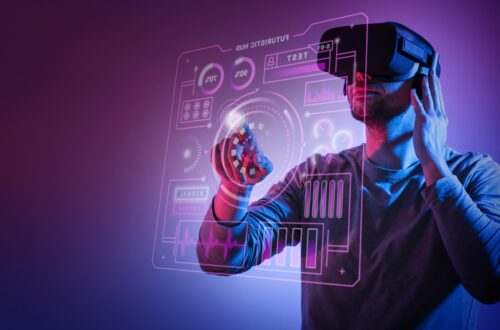A World on the Edge of Hunger
Food is a basic human right. Yet, in the 21st century, over 735 million people still face chronic hunger, while global food systems are strained by climate change, population growth, supply chain disruptions, and resource depletion.
To feed a projected 10 billion people by 2050, we must radically rethink agriculture, distribution, and consumption. Enter Artificial Intelligence (AI)—a game-changing force driving predictive, data-driven, and scalable solutions to secure our food future.
1. Predicting and Preventing Crop Failures
Crop failures due to droughts, pests, or diseases can devastate food supplies—especially in vulnerable regions.
AI, powered by satellite data, weather forecasting, and machine learning models, can:
-
Predict crop yields and risks weeks or months in advance
-
Monitor crop health via drones and computer vision
-
Warn farmers about early-stage diseases or infestations
-
Suggest adaptive strategies based on climate models
By giving farmers real-time, actionable insights, AI helps prevent loss before it starts.
2. Optimizing Agricultural Productivity
AI in precision agriculture enables farmers to do more with less—less water, fewer chemicals, less land.
Through AI-driven technologies like:
-
Smart irrigation systems
-
Autonomous tractors and drones
-
Soil analysis algorithms
-
Weather-adaptive planting models
…farmers can improve yields and minimize input costs, ensuring more stable and scalable food production.
3. Reducing Food Waste with AI Logistics
Globally, we waste one-third of all food produced—much of it due to inefficiencies in harvesting, transportation, and storage.
AI can drastically reduce this waste by:
-
Forecasting demand more accurately to avoid overproduction
-
Optimizing harvest and transport timing with AI logistics tools
-
Detecting spoilage risks with sensors and machine vision
-
Improving warehouse management and cold chain integrity
Smart logistics powered by AI ensures food reaches tables, not landfills.
4. Enhancing Supply Chain Resilience
From geopolitical conflict to pandemics, the food supply chain is fragile. AI improves its resilience by:
-
Predicting disruptions and rerouting supplies in real time
-
Analyzing global trade patterns for early warning signals
-
Monitoring food prices and market trends for policy response
-
Matching surplus with scarcity through AI-driven platforms
This makes food systems more responsive and equitable—especially in crisis situations.
5. Empowering Smallholder Farmers
Smallholder farmers produce one-third of the world’s food but face major obstacles: lack of information, access to markets, and financing.
AI tools—when designed inclusively—can empower them by:
-
Providing voice-based advisory apps in local languages
-
Offering low-cost crop prediction tools via mobile
-
Connecting farmers directly to buyers and suppliers
-
Supporting microloans and insurance through risk modeling
The result? More resilient livelihoods and food-secure communities.
6. Food Policy and Global Planning
Governments and global organizations use AI to guide:
-
Food security risk modeling across countries and regions
-
Climate change adaptation planning
-
Resource allocation for aid and interventions
-
Early warning systems for famine and drought
Platforms like the FAO’s Hand-in-Hand Initiative and World Bank’s Data-Driven AgTech are leveraging AI to improve global food governance.
7. Ethical and Environmental Considerations
While AI offers promise, we must be mindful of:
-
Data ownership and access—who controls the intelligence?
-
Bias in algorithms that may exclude smallholders or indigenous communities
-
Sustainability trade-offs—over-reliance on industrial-scale AI may hurt biodiversity
-
Digital divides that leave the Global South behind
The solution lies in building ethical, inclusive, and transparent AI ecosystems for food.
Conclusion:
Intelligence is the New Fertilizer
AI is not a silver bullet—but it’s a powerful enabler. By turning data into decisions, AI can help the world produce food more efficiently, sustainably, and equitably than ever before.
To feed the future, we don’t just need more farms—we need smarter food systems. And AI is one of our best tools to build them.
Visit our Website: VinesNest





